Editor’s Note: Amy Skinner is a regular guest columnist and has been a horse gal since age six. She runs Essence Horsemanship, rides and teaches English and Western. Skinner has studied at the Royal Andalusian School of Equestrian Art 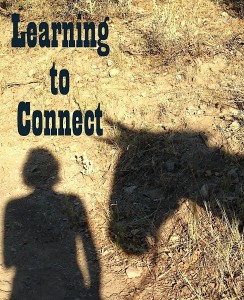 in Spain, with Buck Brannaman, Leslie Desmond, Brent Graef, and many others.
in Spain, with Buck Brannaman, Leslie Desmond, Brent Graef, and many others.
Read more about Amy here.
Read more here
This article is part of an ongoing series called “Learning to Connect.”
Read more Learning to Connect articles.
By Amy Skinner
Bill Dorrance said, “You can’t teach feel, you have to experience it.”
I like to think I make my living teaching feel. But really, it’s an elusive goal. It isn’t that some people are born with this magical, mystical ability while others aren’t. And it isn’t just about education.
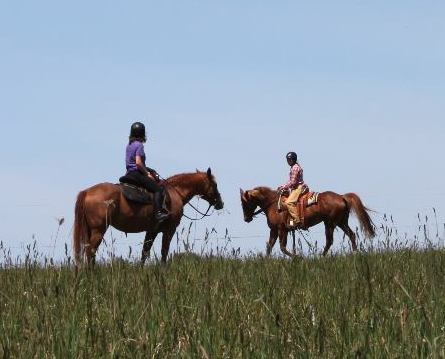 Some of the most talented horsemen and women I know are not well-educated in the classical sense. On the other hand, I’ve ridden with some highly educated riders who I would not even let lead my horse. I’ve also ridden with some incredible horse people who flapped their elbows, left their fingers open, and rode with their legs ahead of them as if they were in a Laz-E-Boy. In other words, they were technically dubious riders. But they had the ability to think, feel, and communicate with their horse.
Some of the most talented horsemen and women I know are not well-educated in the classical sense. On the other hand, I’ve ridden with some highly educated riders who I would not even let lead my horse. I’ve also ridden with some incredible horse people who flapped their elbows, left their fingers open, and rode with their legs ahead of them as if they were in a Laz-E-Boy. In other words, they were technically dubious riders. But they had the ability to think, feel, and communicate with their horse.
Feel is tricky to teach. I’ve taken riding lessons since I was six years old. It’s taken me these 20 years to learn that in order to learn I have to get out of my head. I still don’t always do it. Maybe by the time I’m 90, I’ll be where I hope to be.
I struggle with getting out of my head when taking a lesson. When I’m worrying about what the people on the other side of the fence think, or when trying to impress or please my instructor, or when feeling doubt about my ability, I am not able to feel.
As an instructor, it’s incredibly important for me to keep my students in a learning frame of mind. If the rider is not in the moment, they are shut off from feel. Instructors cannot give you feel, but they can guide you to it. It has to do with observation, 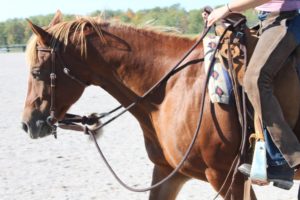 open mindedness, and creativity.
open mindedness, and creativity.
Watch WiseAssWallace discuss Feel.
One of the reasons why systems like Parelli and others are successful is they offer easy-to-follow steps, taking out the guess work. Even dressage and its levels offer a type of scale that allows people to check their work.
However if we’re open-minded and observant, we’ll find that these systems and scales don’t fit every horse. If we are going by feel alone, the systems and scales do a tremendous disservice to many horses, as well as the students trying to learn about feel.
So really, experimentation and creativity are essential qualities for the avid horseman who has to think outside the box in order to find the path needed for their his at each moment.
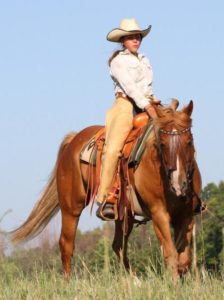 One of the most difficult things as an instructor is trying to educate someone who is already educated. People with academic careers are often very linear thinkers. They can have a hard time thinking creatively. Also, people who read and study riding and horsemanship can get a set idea about what is “right.”
One of the most difficult things as an instructor is trying to educate someone who is already educated. People with academic careers are often very linear thinkers. They can have a hard time thinking creatively. Also, people who read and study riding and horsemanship can get a set idea about what is “right.”
Yet riding is much like art. You can learn all the rules, but a good artist knows when to break them.
Feel requires lots of room for mistakes, accidents, and failure. We can’t be too concerned about messing up, because we can’t know what doesn’t work sometimes until we’ve gone there. We can’t know the limits until we’ve gone too far. We can never advance until we’ve pushed.
So how do you learn feel?
— No, don’t stop taking lessons.
— Don’t stop reading.
— Don’t stop thinking.
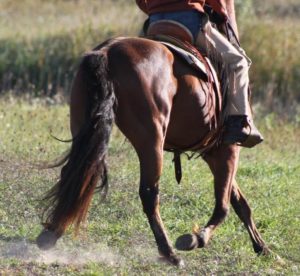 But do get out there and watch your horse.
But do get out there and watch your horse.
Go behind the barn and try new things. Who cares what others think?
Don’t be afraid to bounce a little, mess up, look stupid, whatever.
Do you think the “greats” never ruined a horse, got bucked off, cried in their trucks, or went down the wrong road with their horses for too long?
Feel requires observation, wiggle room, quiet moments watching, and reflection.
— Don’t be self-deprecating.
— Don’t be pompous.
— Don’t let your education get in the way of your education.
Listen to your instructor, but throw away what feels wrong. Your horse knows what’s best and if you watch and listen, so will you.